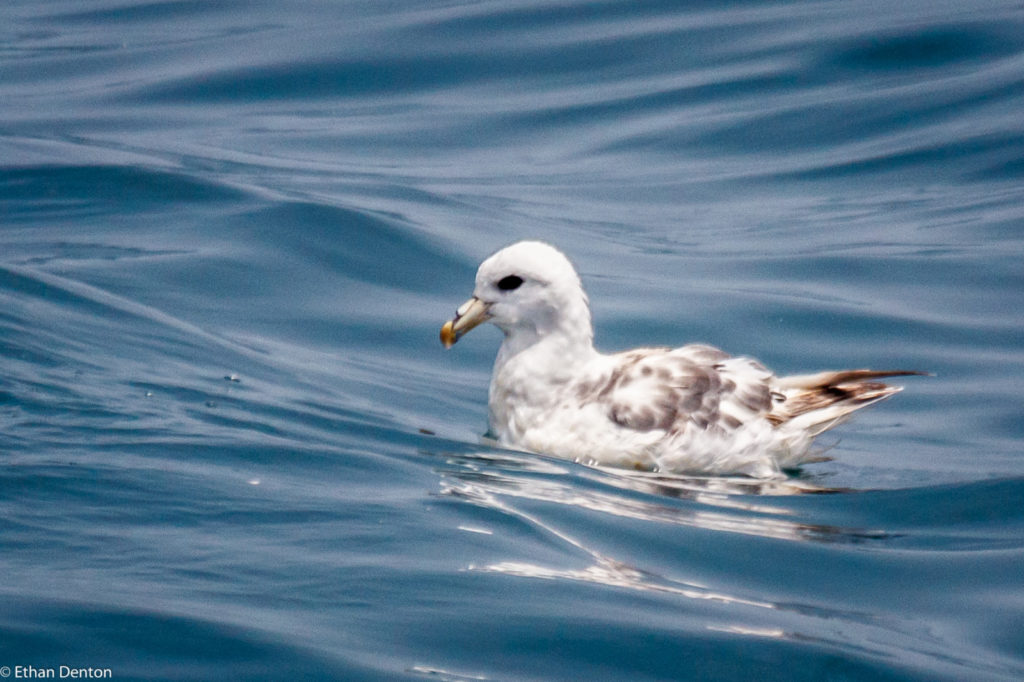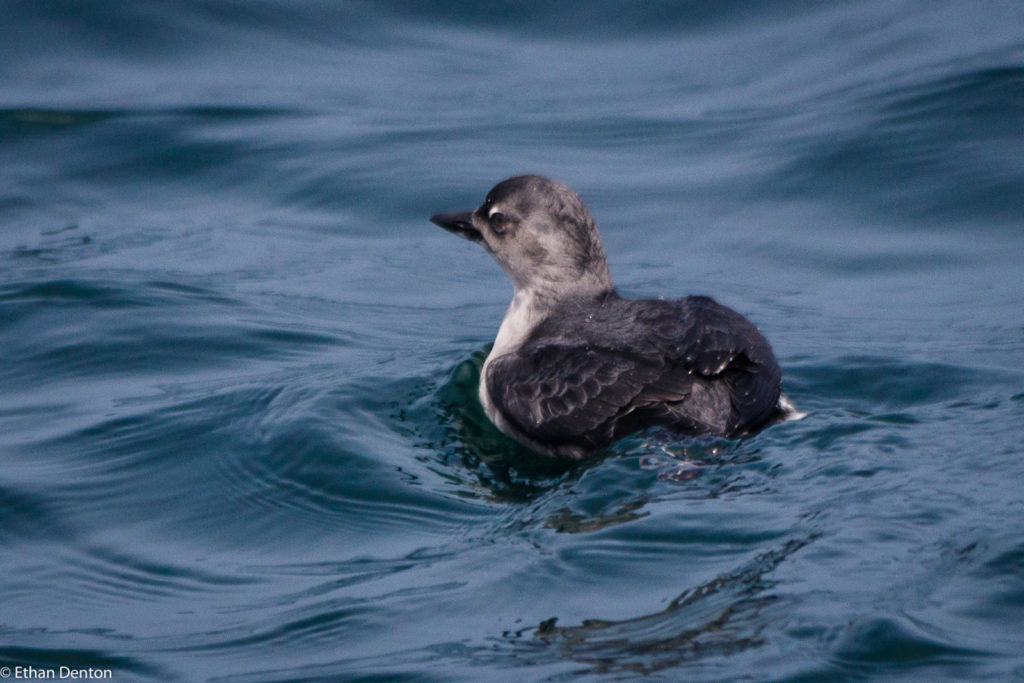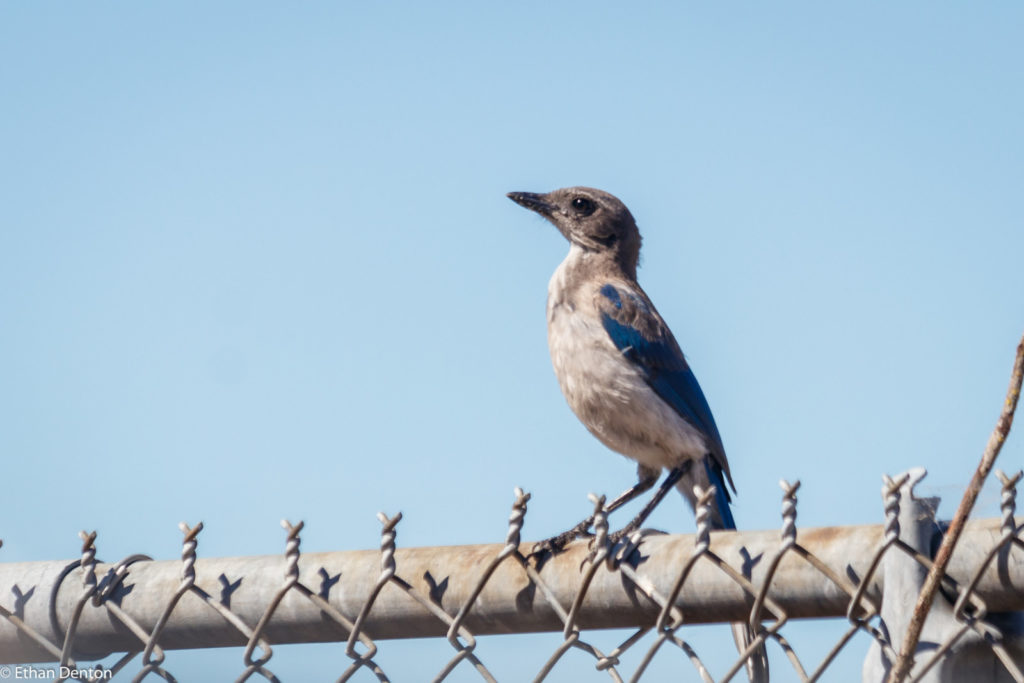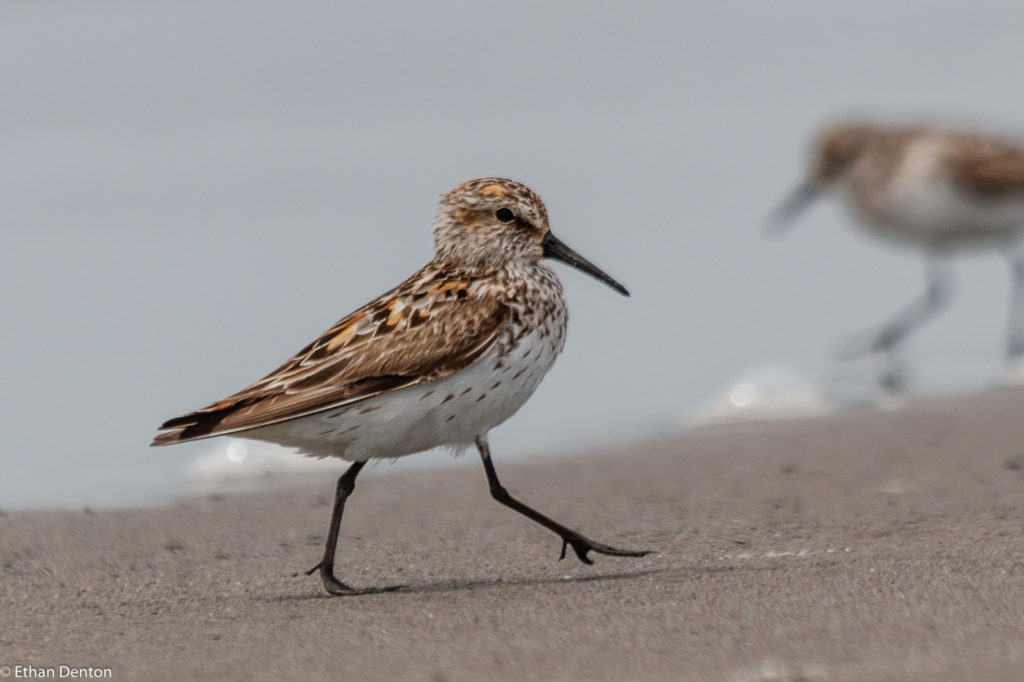We set out early from our hotel the day after the pelagic tour, hoping to reach Big Sur by noon. This well-known Condor hotspot would serve as the turn around point for our almost month long vacation. Fools that we were, we thought it would be a simple task – reach the area, find a walking trail with some life birds reported on it recently, and watch the skies. In fact, we never even made it to Big Sur.
The plan was derailed before we even hit the freeway, as a silhouette atop a lamppost piqued our curiosity. Trailing the bird as it dropped from the pole and alighted in the parking lot of the hotel, the white wing flashes of a Northern Mockingbird became apparent. Lifer! Hopping out of the car to fire off a few shots of the bird, I noticed a yellow form swoop up into a nearby palm tree. It soon shifted to a leafless alder, and we confirmed it as our second lifer of the day – Hooded Oriole! With two life birds to our name before we had even departed for the day, things were looking good.

Our next stop was a speciality stop. For many years, a solitary Northern Gannet has been stuck on the west coast – theories run that it came over the continent, through the arctic sea, and no longer knows how to return whence it came. Word was that the bird was currently located at a spot known as the Devil’s Slide Trail, on Egg Rock. After a short, easy walk into the area, we happened across a man who informed us that the Gannet was currently perched atop a rocky island with thousands of Common Murres.

Yep, it’s there! Can you see it among the murres (Gannet circled in red)? Fortunately, I had my scope and we were thus afforded some excellent views of this extreme rarity.
By now, we were running hours behind schedule, so we stopped for lunch in a small Santa Clara town. Birding the ponds nearby, we found Purple Finch, Bushtit and two species of Towhee. The highlight slipped into a small tree unobserved, but when we found it, it was observed with gusto! A lone Lesser Goldfinch made our fourth lifer of the day.

California Condors being our main target that day, we rushed down to maybe twenty miles north of Big Sur, before slowing down and gluing our eyes to the sky. As every Turkey Vulture came into sight, it was rapidly assessed before being dismissed as too small. Eventually, one bird seemed larger, soaring close to the ground to the right of the road. Pulling over to check, we confirmed the sad news yet again; not a Condor.
Yet even as I swung my legs into the car, I saw something appear over the hill on the opposite side of the road. Surely this could not be a bird, it was too large. It had to be! But there was no doubt about it, as we watched a fully fledged California Condor materialise from the heavens, swiftly followed up by three more – a family group!

The majestic raptors soared high overhead, barely moving a wing as they floated over the car towards the sea. Mission accomplished!
From there, we swung the car around and began the long trek north, resting that night roughly thirty miles south of our starting point that morning.
Our first stop of the second day was at a hotspot known as “Arroyo Del Valle” – a place suggested by a friendly young couple on the pelagic for potential Yellow-billed Magpies. Though we found none of the endemic counterparts to our own magpies, we enjoyed an overwhelmingly successful time there, with Oak Titmouse, Acorn Woodpecker and Broad-tailed Hummingbird welcoming us to a lush habitat where we found four life birds in under two hours.

Exploring the area, we added California Thrasher and more Lesser Goldfinches to the list, before finding a pair of Ash-throated Flycatchers right at the end. Turkey Vultures were also very much in evidence, with over 20 observed.

Only three major stops that day – Arroyo Del Valle, Hayward Regional Shoreline and the Yolo Bypass. We visited the shoreline second, searching for Least Terns and Snowy Plovers. Having missed out on the plovers at Leadbitter Point, we were eager to find this threatened species before we drove ourselves out of range once more.
Before long, we had located a plover – more than one, in fact. Six adults shepherded three young ones, being careful to never approach the path; they stayed so distant that it was difficult to get a shot of these diminutive shorebirds.

Yolo Bypass (our final spot of the day) was steaming hot, and while we only found one life bird in the form of the Great-tailed Grackle, we came away with many species of sandpiper and waders. Snowy and Great Egrets mixed with Dowitchers, Western and Least Sandpipers to form a patch buzzing with life in the sweltering heat.

Late that night, we snagged the long-awaited Yellow-billed Magpie.
The last two days were about driving more than birding, though we still saw some exciting species. Breaking through the Oregon border, we picked up our only Black-throated Grey Warbler of the trip along with two Nashville Warblers before reaching Eagle Ridge in Klamath. Though we spent little time here, we managed to pick up five Williamson’s Sapsuckers, an Olive-sided Flycatcher and even a Sooty Grouse. Farther north, we found a lake brimming with Western and Clark’s Grebes.

At last, the penultimate day of the trip arrived. We had but one regret, one which we intended to fix before leaving for good. Time after time, we had missed out on one of my top priority target birds, the White-headed Woodpecker. With only one more chance to get it, things were looking grim. Our last hope lay in the mountain town of Sisters. Here, we hoped to find the AWOL woodpecker, with maybe even a Pinyon Jay thrown in.
After over an hour, we had heard Pinyon Jays, but found no woodpeckers. Giving up, we returned to the car, when I spotted a flash of white at a birdbath. At last, the White-headed Woodpecker had decided to make an appearance. Like the Snowy Plovers, the White-heads proved incredibly difficult to photograph, rarely venturing out into the open, and mostly staying in the dark, out of sight.

On that note, we left Oregon and blazed through Washington back to BC, and from there home to Alberta. We left the trip with an amazing 37 lifers, and 188 total species across 75+ checklists and almost 5000 photos.
Thanks for reading!

Read the other posts here:
















